Juxtapositions
A few months ago, I grew tired of how polemical language had become. Needing to renew my love for humans, I found it again in sorting through my collection of postcards—hundreds, at this point, after years of mostly being able to afford only these small images. I decided to share bits and bobs in collages that helped me look more closely at what had initially attracted me to a now familiar image. I’ve been posting these collages on Facebook, roughly daily, on the chance that they might be enjoyed by others.
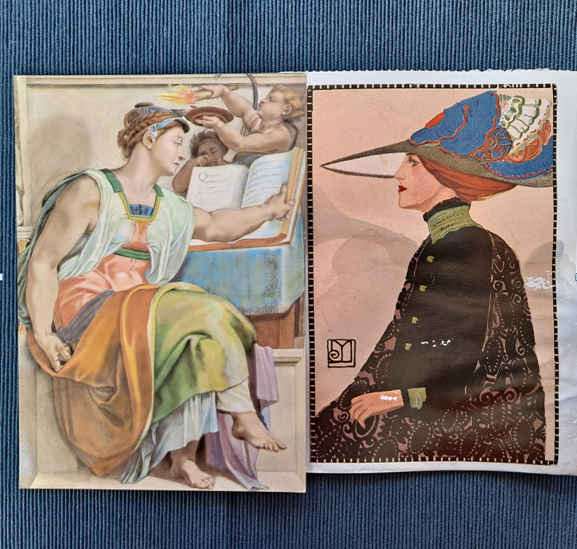
L to R: Michelangelo, Eritrean Sibyl (detail, Sistine Chapel), Vatican City; Maria Likarz-Strauss, Postcard #557 from Wiener Werkstatte (Vienna Workshop), from Der Salzburger Landessammlungen Rupertinum (Austria)
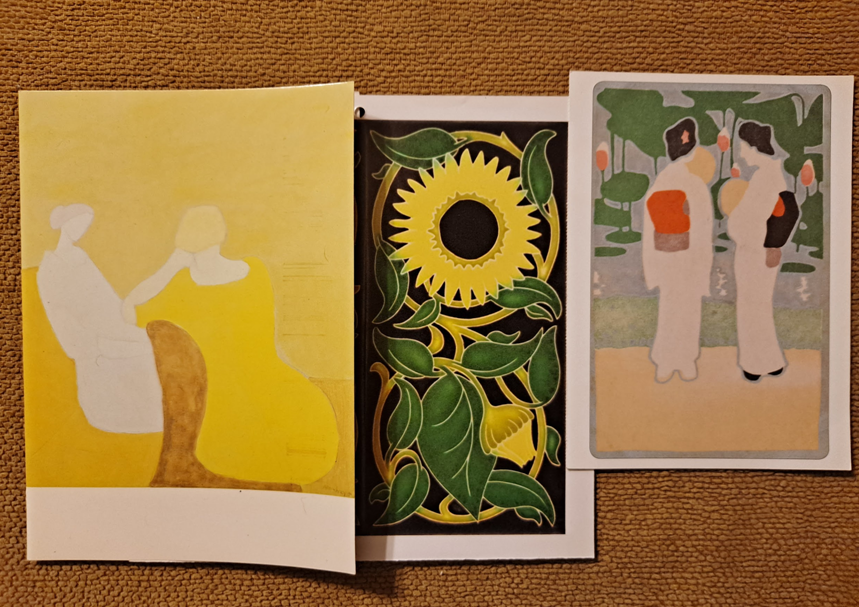
L to R: Milton Avery, Interlude, from Philadelphia Museum of Art; unidentified designer, Arts and Crafts tile; unidentified late Meiji printmaker for Japanese Postcard Association, Two Women in Front of a Lotus Pond, from Museum of Fine Arts Boston
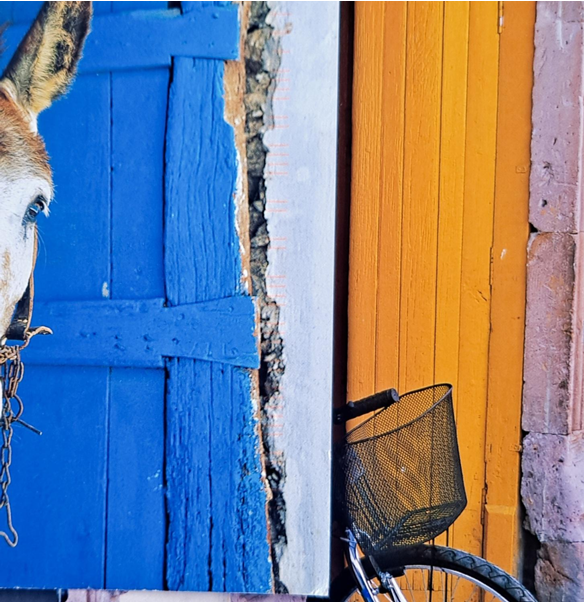
Blue to yellow: unidentified photographer, Donkey and blue door (Greece), received from Ioana Schneider and Anaïs Dotiu; Jacqueline Jones, “Ready to go” (Dolores Hidalgo, Mexico), published by Stonehenge Designs, card sent to Nadia Seiler upon completing library school
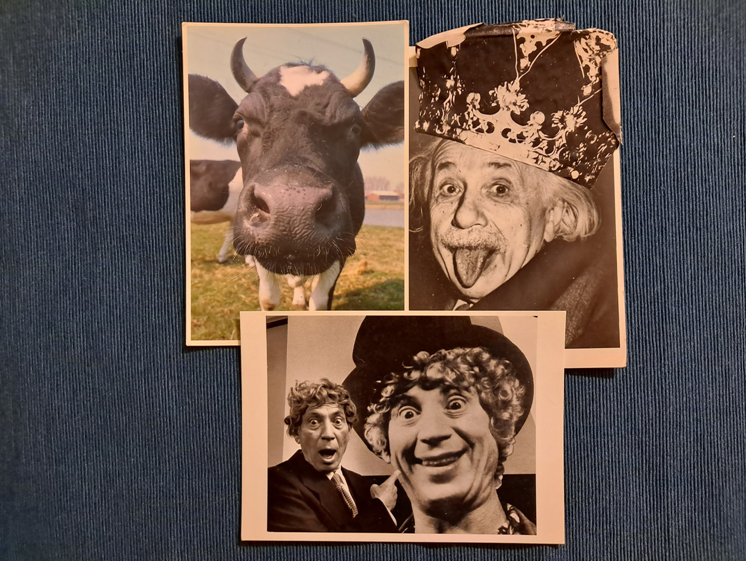
Clockwise from L: Marius van Leeuwen, Noord Holland, from Art Unlimited, received from Annie Rapaport; Arthur Sasse, Albert Einstein, from FPG Photographs; Henri Dauman, Harpo Marx and the Algonguin in New York City 1961, from Musee de l’Elysee (Lausanne)
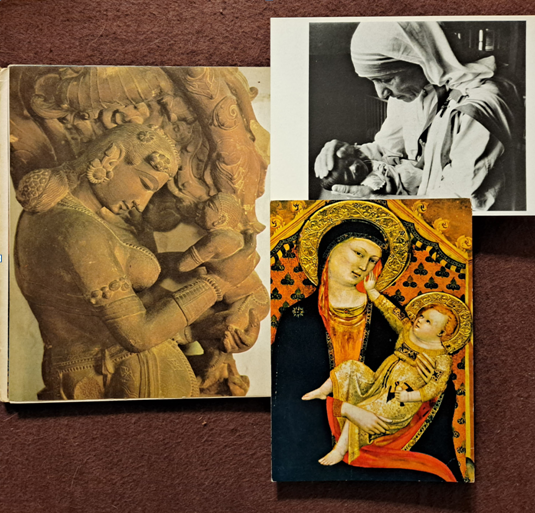
Clockwise from L: unidentified 11th c. sculptor, detail from the Bhuvanesvar Temple of Orissa, from Indian Museum (Calcutta); unidentified photographer, Mother Theresa, from Editions Gendre (Paris); Bernardo Daddi, Virgin and Son, from Chiesa di Orsammichele (Florence)
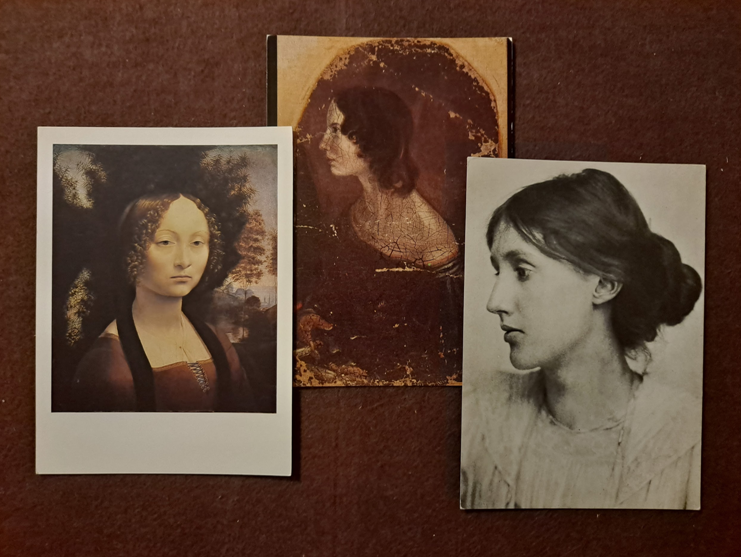
L to R: Leonardo da Vinci, Ginevra de’ Benci, from National Gallery of Art, Washington DC; Patrick Branwell Bronte, Emily Bronte, from National Portrait Gallery; G.C. Beresford, Virginia Woolf, from National Portrait Gallery
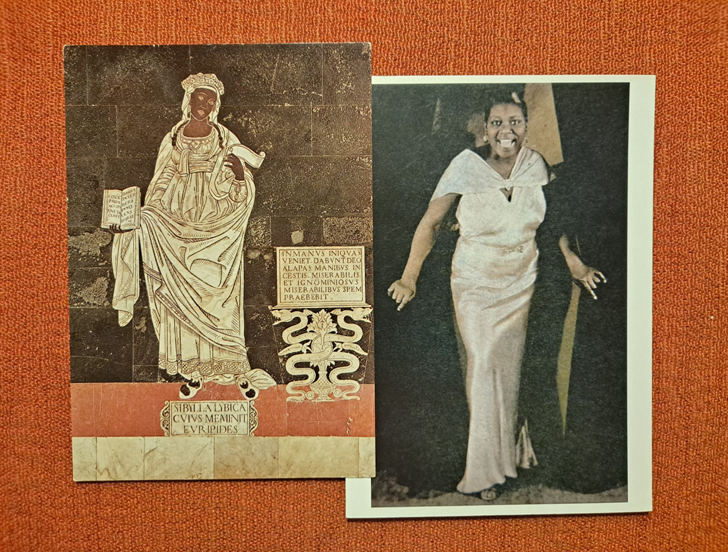
L to R: Guidoccio Cozzarelli, Libyan Sibyl, from the Cathedral of Siena; unidentified photographer, Bessie Smith, from Peter Newark American Pictures

L to R: Marc Chagall, Liberation; unidentified fancy dancer; Picasso, Jar with flowers (received from Calli Towne); Odilon Redon, The mystical boat

L to R: Jill Posener, London (1979), published by Acme Cards; Tim Bieber, Two Mature Women Playing Pool, unknown source
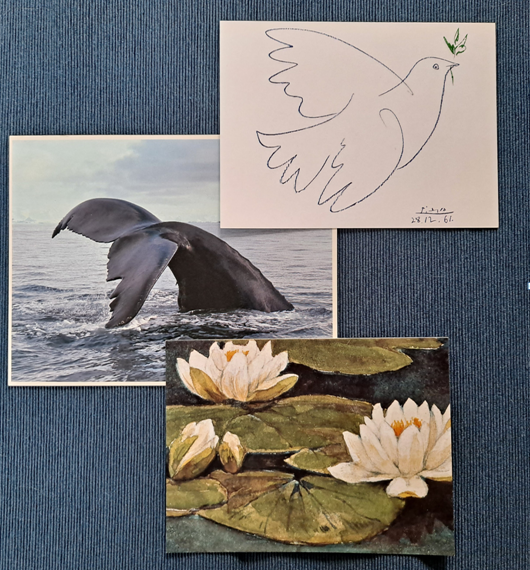
Top to bottom: Pablo Picasso, Blue dove, from Editions Combat pour la Paix; Douglas T. Cheeseman, Humpback Whale: Marine Life #8455, from Peter Arnold Inc; Willem Wenckebach, Witte Plomp from Album Zomer, from Zaans Museum (Zaandam, Netherlands)

L to R: John Running, First Laugh: Rose Butler and son, promotional card to support American Indian College Fund; Chester Higgins, Jr, Edward Kennedy “Duke” Ellington, published by Pomegranate Communications
The full caption for The First Laugh reads: “In traditional Navajo culture, the child is viewed as the ultimate gift, a precious gift that must never be abused. The First Laugh ceremony ensures that an infant is constantly watched over and kept in a cradle board until the child laughs for the first time. This moment marks the child’s birth as a social being. The member of the family or friend of the family who makes the baby laugh must then provide for a celebration in honor of the child.”
~ Anne Seiler ~
Table of Contents
Cover: Wheat Fields by Steven Sexsmith
Publisher’s Note: Kimberly Gladman
To Celebrate my Father: Naomi Myrvaagnes
Using a Scalpel Not A Sledgehammer: The Investor Response to the Russian War in Ukraine: Sonia Kowal
Mom’s Rainbow Inspiration: Scott Axelrod
Gödel, Arrow, Preference, Spirit, and Dictatorship: Scott Axelrod
Shorting the Earth (Blue Hill) : Kimberly Gladman
Ukrainian Embroidery: Heritage, pride, compassion: Beverly Bartos Burns
